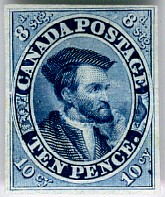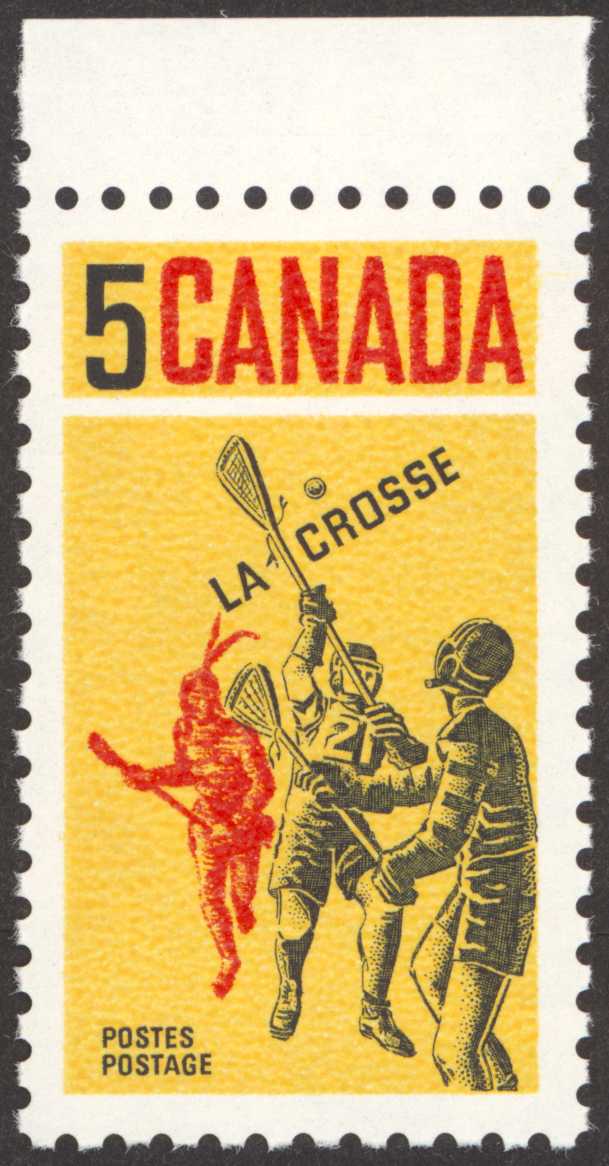 Canadian Stamps!! - page 2
Canadian Stamps!! - page 2

 Canadian Stamps!! - page 2
Canadian Stamps!! - page 2



This stamp shows Jacques Cartier, a French explorer who was one of the first people from Europe to land on what is now called Canada. We now know that people from Norway landed on Newfoundland many years earlier. There are no stamps for them though.
The stamp is imperforate and was first issued in 1855, costing 10 pence. When the stamp was issued, British currency (pounds, shillings, pence) was in use.

A stamp showing a picture of a stamp? Well, since stamps honour lots of other things, why not honour old stamps too? This was part of a set of four stamps issued in 1978 to mark CAPEX 78, a Canadian International Stamp Exhibition held in Toronto.
The original stamp, issued in 1855, is shown above.

This stamp shows people playing the sport of lacrosse, Canada's national sport (and you thought it was hockey!). This sport was invented by the Indians living in North America before the arrival of Europeans. It was issued in 1968.

This stamp is part of a set of three issued in 1973. The stamps commemorate the founding of the North-west Mounted Police (NWMP) in 1873 by Canada's first Prime Minister, Sir John A. Macdonald.
In 1920, the name of the police force was changed to the Royal Canadian Mounted Police (RCMP).

This cover was used by the North-west Mounted Police. Did you notice that someone took the stamp off it? Also, did you notice the "O.H.M.S." on the envelope? It stands for "On Her Majesty's Service" and was on envelopes used by the Canadian government.
Stamps used by the Canadian government had OHMS printed on them, or had holes punched in them that spelled OHMS. In later years, the OHMS was replaced by the letter "G", for "government" or "gouvernement". Don't forget that Canada has two official languages, English and French.

Issued in 1947, this stamp marks the 100th anniversary of the birth of Alexander Graham Bell, who invented the telephone. He was born in Scotland, and emigrated to Canada in 1870 where he settled near Brantford, ON. In 1876, the U.S. Patent Office issued him a patent for the telephone. He died on 2 August 1922.
The illustration shows a block of four stamps from the upper left corner of a pane of 50. There are inscriptions in the top and left pane margins. The top reads "No 1 997". 400 copies of the stamp design were engraved on a steel plate called a "printing plate". Ink was applied to the plate to print the stamp in sheets of 400. The sheets were cut into panes of 50 issued to post offices. The "1" is the plate number, and the "997" is the printing order number assigned by the printer. The inscription along the side identifies the printer, Canadian Bank Note Co., and also includes the plate number. Two plates were used to print just over 25 million copies of this stamp.
Some collectors value the information in the inscriptions. As a result, they collect stamps in plate blocks that show the inscription.